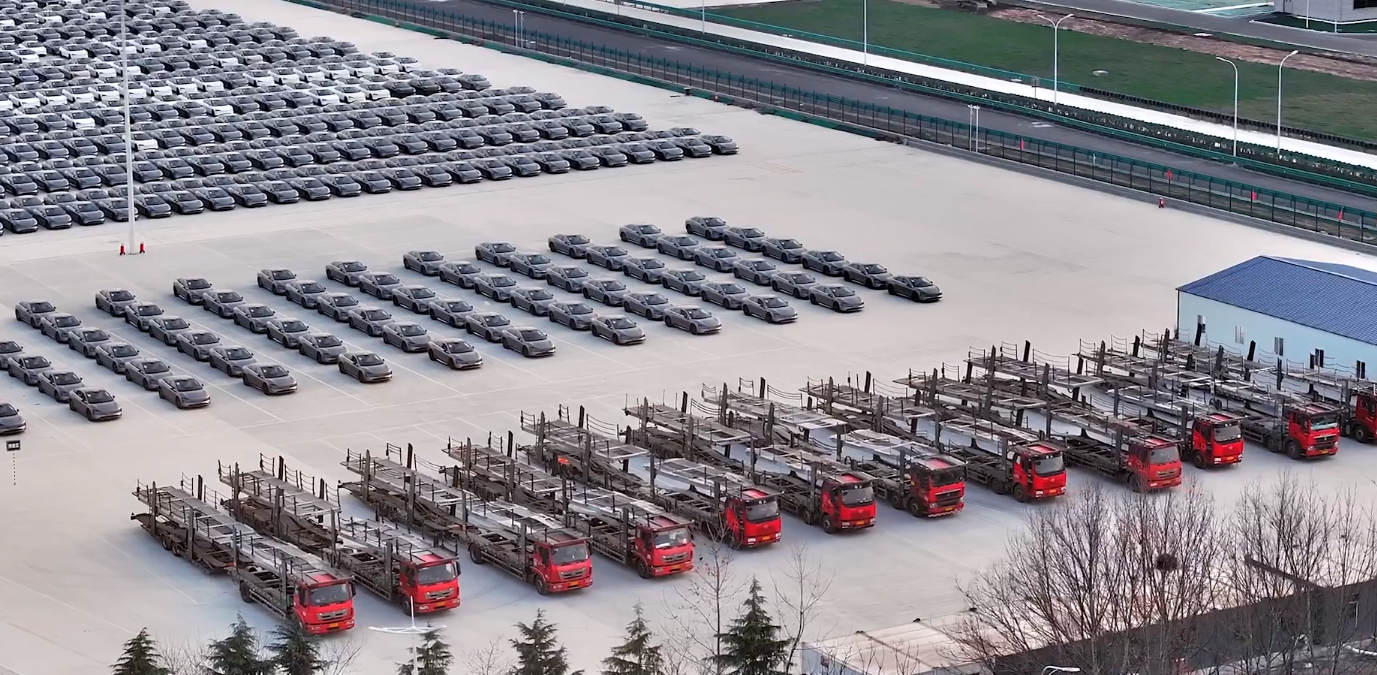Due to chip and supply chain issues being resolved, the mass delivery of the Huawei Smart Screen S7 may begin. On March 30th, Yu Chengdong, Chairman of Huawei’s Car BU, announced on Weibo that a large number of Smart Screen S7s have left the production line and are on their way to customers. A video showing the Smart Screen S7 coming offline and starting transportation was posted below the text.
The Huawei and Chery joint brand “Zhijie” launched the Zhijie S7, the first sedan under the Huawei Smart Selection Car business system. Initially popular, the Zhijie S7 quickly received over 20,000 orders. However, unlike the sustained popularity of the Wenjie, the Zhijie S7’s popularity plummeted after its release. Prior to the delivery of the S7, Yu Chengdong’s Weibo account had not posted any content about Zhijie since before its launch.
The low profile is not intentional, but due to initial delivery difficulties. In January this year, some owners reported frequent problems with the delivery process of the Zhiji S7, causing a series of public controversies. The cooperation between Huawei and Chery did not have a good start, with only over 2000 Zhiji S7 sold since its launch. Currently, the Zhiji S7 is about to start large-scale deliveries, which is positive news for Huawei’s smart car business, but the timing is a bit awkward. In the next two weeks, the Xiaomi SU7 will attract most of the industry’s attention. Under Yu Chengdong’s Weibo post about the Zhiji S7 starting large-scale deliveries, the most commented topic is not the S7 itself, but Huawei’s upcoming P70 phone. In a way, the Zhiji S7 has missed the best market expansion period.
Furthermore, the level and specifications of the Xiaomi SU7 are almost directly comparable to the Zhijie S7, making it difficult for the latter to demonstrate its competitiveness. Meanwhile, Huawei’s third brand in the intelligent car sector, “Xiangjie,” has been launched in collaboration with BAIC, with the first model Xiangjie S9 already listed in the MIIT directory. The Xiangjie S9, slightly larger than the Zhijie S7 in size and nearly identical in design, may not have a high probability of simultaneous hot sales due to the slight homogenization of the two models. On March 29, Huawei released its financial report for 2023. In 2023, Huawei achieved global sales revenue of 704.2 billion yuan, a year-on-year increase of 9.64%, and a net profit of 87 billion yuan, a year-on-year increase of 144.4%. In terms of the Intelligent Car Solutions BU, Huawei achieved a revenue of 4.7 billion yuan in 2023, a year-on-year increase of 128.1%, the largest growth rate among Huawei’s five major business segments. On March 16, Huawei’s Executive Director and Chairman of the Car BU, Yu Chengdong, revealed at the Electric Hundred People Forum that “Huawei’s Intelligent Car business has turned losses into profits in the first three months, and the Car BU business is close to the breakeven point. I expect that starting from April, we should be able to turn losses into profits and achieve a positive and benign development.” In the first half of 2023, Huawei’s Car BU business revenue was 1 billion yuan, indicating rapid growth in the second half of last year. The main reason for the rapid growth in the second half of the year was the strong sales of the new M7 and M9 models in the Wenjie series. In the other two business models of the Car BU – the parts supply model and the Huawei Inside model, there are currently no mainstream models in the market. Companies participating in the HI model, such as BAIC Jiuhu and GAC Aion, and Changan Avita, have all seen unsatisfactory market performance for their related cooperative models. In simple terms, the main revenue of Huawei’s Car BU comes from the Intelligent Car business, with the core pillar being the Wenjie series. This means that if Huawei cannot find a second pillar after Wenjie in time, the Car BU’s momentum may be insufficient. The market performance of the Zhijie S7 and Xiangjie S9 is crucial.


